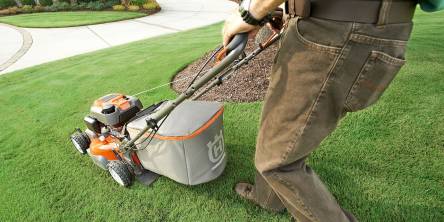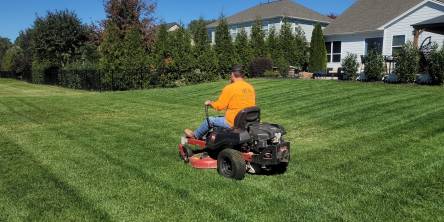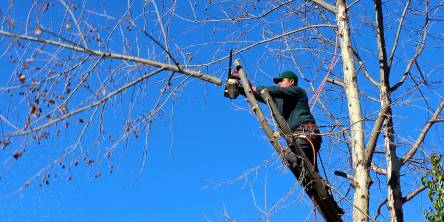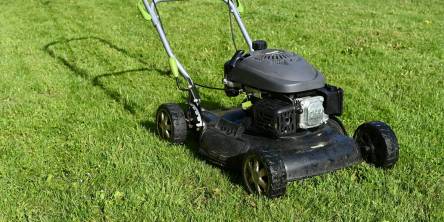Pole Saw Cutting Techniques
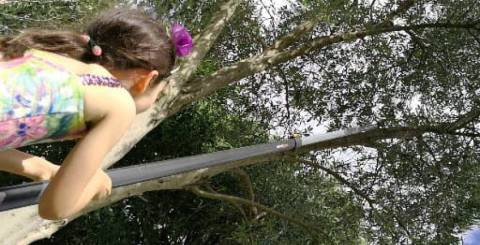
A pole chainsaw is a useful tool for cutting tree branches, especially the higher ones. However, many people aren't using the proper technique. This could lead to accidents and injuries. The following list contains directions for cutting branches with a pole chainsaw.
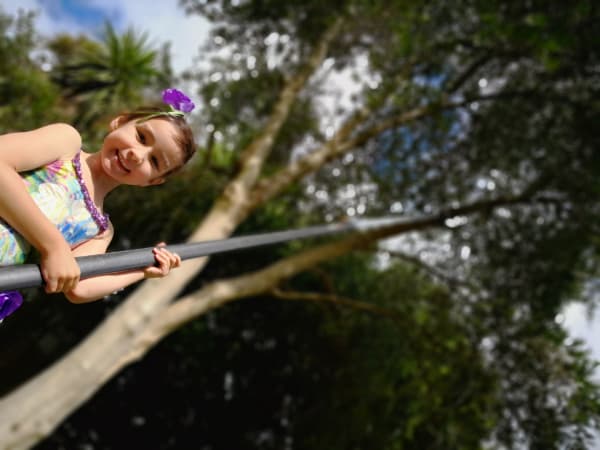
A Pole saw pruner in use. Reproduced with the permission from Toolazine.com
Let’s get started.
1. Clear the Area and Plan for Falling Limbs
The first thing you should do is clear the work area. This is usually the space around the tree or bush. There should also be a restricted zone around you. No one should enter it because there's a risk of injury or even death. Don't cut near electrical lines. A distance of 50 feet is recommended.
There are a few things to be prepared for while cutting with a pole chainsaw. A small-sized brush may seem harmless, but they can get caught in the chain and be thrown back toward you at very high speeds. This could cause injuries. Another scenario to watch out for is spring back. This occurs when tension is released from wood fibers as they are cut.
Don't stand under limbs while cutting. Allow space for the limbs to fall safely. Don't work in poor lighting conditions.
2. Grip the Pole Saw Securely with Two Hands
A pole chainsaw is long. If it isn't held properly, injuries can occur. The first thing to do is wear a pair of non-slip work gloves. Then hold the pole saw firmly with two hands. Place one hand in the handle and place the other hand a couple of feet away on the pole. Don't place the second hand too far up the pole. This could lead to overreaching. Move close enough to the target branch to avoid overreaching. The recommended maximum angle is 60 degrees from ground level. Don't stand on unstable surfaces including ladders, steps, rooftops, and trees. Avoid reaching past this mark. Also, never use one hand while cutting branches with a pole chainsaw.
3. Carry Pole Saw from One Place to Another Safely
To reach the work site, you have to carry the pole saw. This could be dangerous. To avoid injuries, remove the battery pack. This will prevent accidental activation of the saw, even if the trigger is pressed. Hold the pole at the balance point to reduce fatigue on the hands. This will also prevent you from hitting anything with the saw as you walk. To make the transport even safer, cover the saw with a scabbard. This makes it impossible for the saw to scratch anything as it is transported.
4. Inspect Pole Chain Saw Before Use
Before using the pole chain saw, check for damages. Inspect the chain. See if it is loose by pulling the chain 3mm and releasing it. If it sags, tighten it. To do this, loosen the alien head screws and rotate the screw in the front of the housing. Avoid over-tensioning the chain; this will cause wear and reduce the number of cuts per battery charge. After the proper tension is achieved (chain will snap back after being pulled 3 mm), tighten the alien head screws to the clamp bar.
Lubricate the chain regularly. For best results, lubricate the chain before each use. It's also recommended to lubricate the chain after the battery is recharged. There are several types of lubricant that can be used including SAE30 weight motor oil or vegetable-based oil.
The pole should be inspected as well. See if the connections are tight. There are usually three connecting points. The handle connects to the extension pole, and the extension pole connects to the saw blade.
5. Use Safety Gear
Before cutting, put on the appropriate safety gear. This includes safety glasses, work gloves, long pants, and steel-toed shoes. Safety glasses will protect the eyes from flying debris. Work gloves will help the user hold the pole saw securely. Long pants will protect the legs from flying debris. Steel toed boots will protect the feet from falling limbs.
Head protection is important as well. A helmet is one type of head protection. It will protect the head from falling debris. Wear it while cutting branches.
6. Basic Cutting Techniques
The first thing to do is turn the pole chain saw on. Then, wait until the saw is spinning at its highest speed. As you move the pole and saw to the tree branch, avoid contacting logs, higher branches, the ground, or other obstruction with the guide bar. Keep the handle below shoulder level to optimize cutting technique. This also reduces the risk of injury.
Don't cut the branch with a back-and-forth sawing motion. Instead, cut one part of the branch, near the trunk. For example, select a point six inches away from the trunk, on the underside of the limb. Then, cut into the branch until the blade goes 1/4 of the way through. Move the saw back and over the branch to make a second cut above the limb. This cut should be made after the saw reaches its highest speed. As the limb falls, balance the weight of the saw and release the trigger after the cut.
The best way to cut a branch is by standing on the opposite side of the tree. Avoid cutting branches that are above the target; cut lower branches first. Avoid cutting thick branches without undercutting it. This might cause the chain to get caught and overload the motor.
7. If Saw Gets Caught in Limb, Follow these Suggestions
While cutting a tree branch with a pole chainsaw, it might get caught in the branch. This is usually observed as bar and chain binding. The best way to solve this problem is by stopping the motor and removing the battery pack. If the limb remains on the saw, lift the limb to dislodge chain.
By following these suggestions, you will be able to safely use a pole chainsaw. With the proper cutting techniques and preparation, any trimming project can be completed. You can expect easy cutting, even in the densest trees, when you use a pole chainsaw.
Similar Articles
Indoor gardening has experienced a remarkable transformation in recent years, largely thanks to advances in LED grow light technology.
Most homeowners think sprinkler installation is just about digging trenches and connecting pipes. The reality involves way more steps than people expect.
Learn how regular lawn care enhances curb appeal, boosts property value, and creates a lush, inviting home exterior with simple, effective practices.
Learn why electric lawn mowers are ideal for families—quieter, cleaner, safer, and easier to use, with less maintenance and more convenience for all.
For many families, the backyard is more than just an outdoor space — it’s a central hub for playtime, barbecues, bonding, and making lifelong memories
Imagine sitting in your backyard on a sunny afternoon. The grass tickles your fingers, and the scent of flowers fills the air. Tiny ants scurry around, a honeybee buzzes from bloom to bloom, and a butterfly flutters past.
Discover why hiring professional tree pruning services ensures safety, promotes tree health, and enhances your property’s beauty with expert care and precision.
Discover how a remote mower enhances safety, cuts consistently, and reduces effort on steep hills, offering a smart, efficient solution for challenging lawn care.
Discover why Kikuyu turf is the top choice for lawns: it's durable, low-maintenance, and thrives in sun or shade. Perfect for any landscape, all year round.



